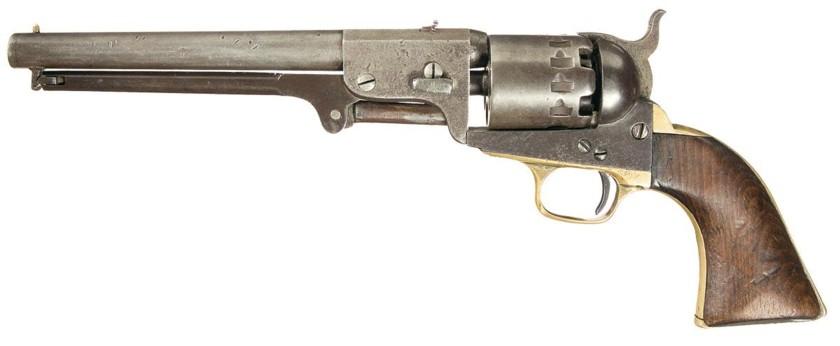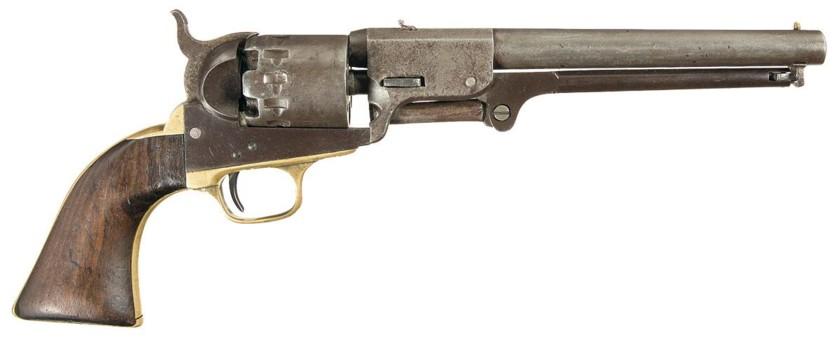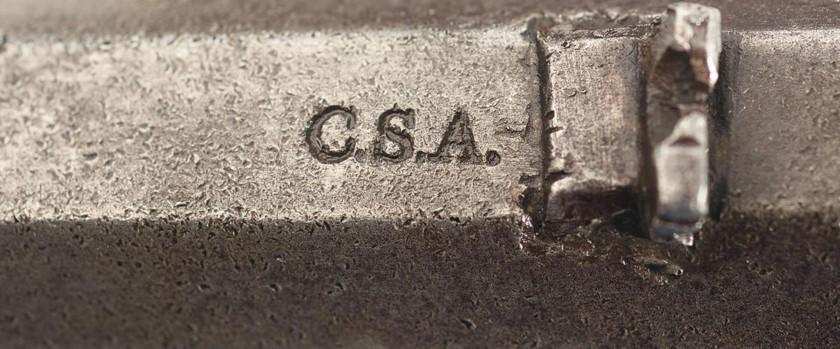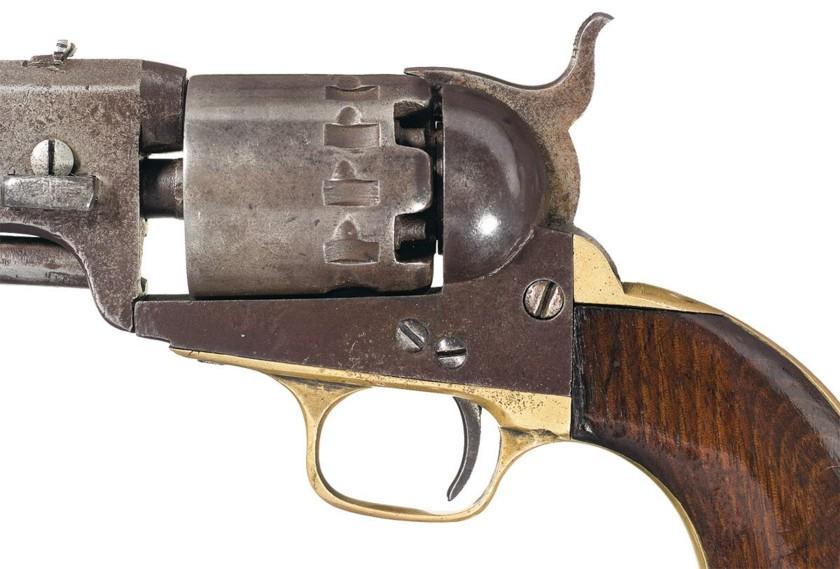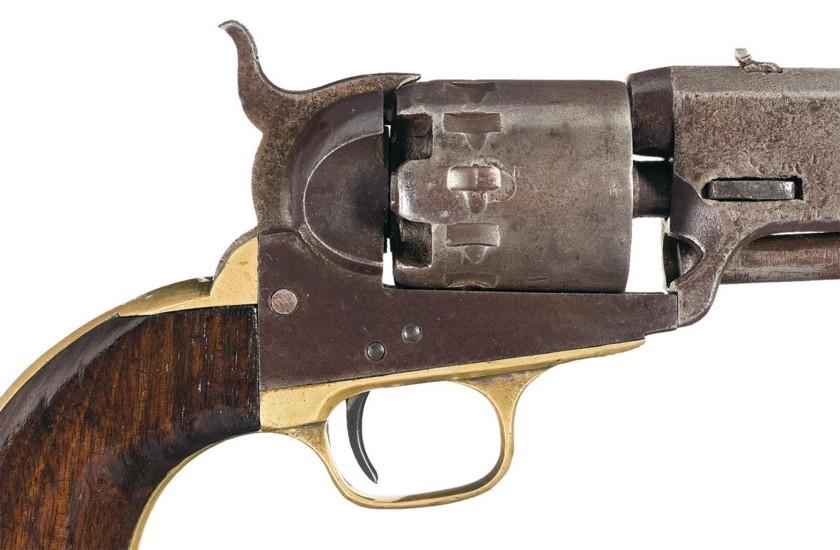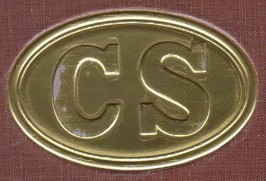

|
Georgia-made revolvers
|
THE LEECH & RIGDON and RIGDON ANSLEY CONFEDERATE REVOLVERS
The story of these weapons and their makers is a little more complex.
Before the Civil War, Thomas Leech was a cotton trader and Charles H. Rigdon was a scale maker. Nothing common with firearms, yet their association would produce for the Confederacy one of the best revolvers of the time, that could easily compete with the 1851 Colt Navy, of which it was a copy.
Leech is also known to have had other business interests, for some Derringer pistols have survived that are marked "made for Thomas Leech & Co, Memphis, Tenn". He had also founded the Memphis Novelty Works in 1861, a company specialized in the manufacture of army cutlery. Confederate swords marked Memphis Novelty Works and/or Leech & Rigdon are extant today.
The exact date of the association remains unknown, but by may, 1862 the company was known as Leech & Rigdon, and was established at Colombus, Mississippi. At that time the partners could secure a contract with the Confederate States Government for the manufacture of 1,500 revolvers of the Colt Navy 1851 type ( called in those days "Navy repeaters of Colt's patent").
A letter adressed to Colonel Gorgas on Nov 26, 1862, has been recovered. In that letter, the partners announce they have 75 finished revolvers on hand.
Since the Confederate Briarfield Arsenal and the Leech & Rigdon company had to move out of Colombus in december, 1862 due to the Union threat, those 75 completed guns are probably the total amount produced at Colombus.
The plant was moved to Greensboro, Georgia; the manufacture of army cutlery was discontinued and all efforts were concentrated on the manufacture of revolvers. By the time of dissolution of the partnership in december, 1863, about 1,000 revolvers had been produced. Why Thomas Leech decided to cease the partnership, is unknown.
Charles Rigdon bought the company's machinery and tools, kept the workers and reinstalled the plant at Augusta, Georgia, where he was joined by Jesse A Ansley and two other partners, with whom he formed the Rigdon, Ansley & Co.
The new company's purpose was still to produce revolvers of the same type for the Confederate army. The original Leech & Rigdon's contract for 1,500 pistols seems to have been achieved, and from serial # 1500 on, the company started the production of guns equipped with 12 slots cylinders, which are today known as the Rigdon Ansley revolvers. The last 500 revolvers of the original Leech & Rigdon contract were produced between january 1864 and january 1865, as well as few less than 1,000 revolvers of the Rigdon Ansley type.
When US general Sherman's troops invaded Georgia at the end of january, 1865, Rigdon ceased his activities and closed his factory. The Civil War would end at Appomattox on april 14, 1865...
THE LEECH & RIGDON REVOLVER
This gun is a close steel-framed copy of the Colt Navy 1851, featuring a round barrel and an octagonal barrel housing.
Its characteristics are the lack of a cap release groove in the front of the recoil shield, its small round-shaped triggerguard and its ball catching system to the ramrod.
The barrel has seven clockwise turning lands and grooves with a modest gain twist in the front part. Most of the guns have a serial number, however some bear no numbers at all. Some minor mechanical changes are also observed from one gun to another, due to the difficulties encountered in the production at wartime.
Two revolvers are known with the markings "LEECH & RIGDON NOVELTY WORKS CSA"; the one has the serial # 15 (the lowest known number), the other one has no serial number at all. The other guns up to serial # 60, bear no maker's name. From the n° 60 on, the name LEECH & RIGDON is stamped with the same dies used to mark the NOVELTY WORKS name, up to serial # 342. From the known serial # 439 on, larger dies were used, and it seems like the CSA stamp was added after the name from serial # 460 on.
Some cylinders have safety pins, others don't. Some have the pins but no slot in the hammer head, some have the slot and only one pin. These discrepancies are probably due to the use of all available parts in a situation of stress, or to field repairs. The observed changes are classified on basis of the few revolvers that have survived, and are consequently subject to corrections. When I say "up to n° 342", I mean that serial # 342 is the highest known number before the change occured. As no gun has been found with a serial # between 342 and 439, the time the changes occured can only be estimated.
Many Leech & Rigdon guns show overwritten serial numbers. The oldest markings made with the small set of dies, show clearly that the dies were damaged, for the same flaws are found on all guns on the bottom of the second E, the H, the G and the D, as well as the 1 digit. Those flaws appear on the entire production from serial # 1237 on, and proove in fact the guns are original, for they are impossible to imitate.
Some revolvers also bear the WH stamp in a diamond on the bottom of the grips. This is Captain Hudgins' acceptance stamp. Hudgins was inspector for the Confederate army.
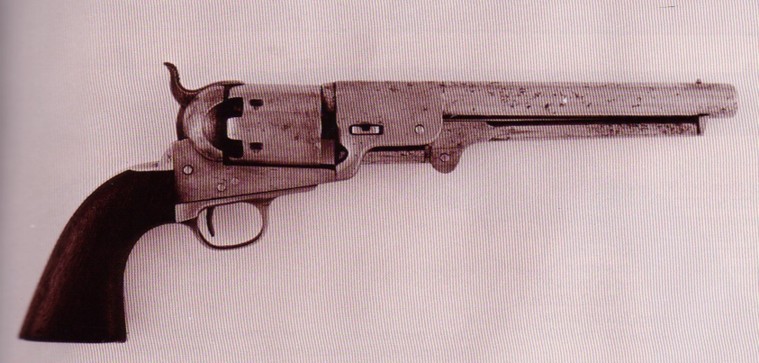
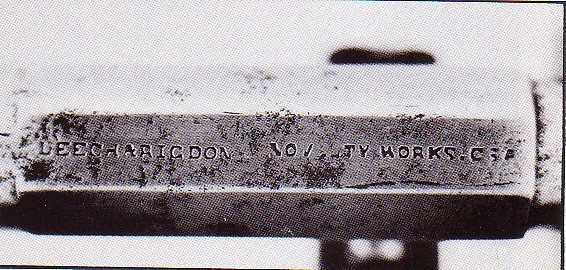
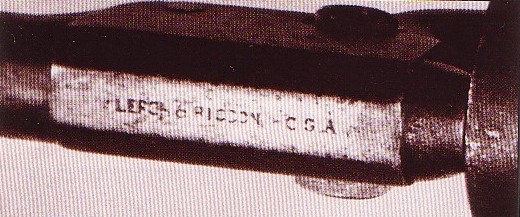
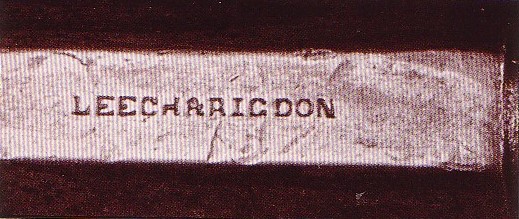
LEECH & RIGDON
Rare, completely original, Model 1851 Navy type revolver manufactured by Leech & Rigdon at Greensboro, Georgia in 1863 as part of a 1500 gun contract with the Confederate government. The revolver has a Dragoon type, round/octagon barrel with brass, cone-shaped, front sight.
The loading lever has a pin and ball catch and the wedge has an integral spring. The iron frame has no capping channel in the recoil shield; there is no cap release groove in the face of the frame.
The six-shot cylinder has six-stop slots and safety pins. The hammer face has a round indentation with center pin.
The revolver has a brass back strap and small oval trigger with one-piece, varnished, walnut grips.
The barrel and cylinder are blued and the loading lever, frame and hammer have a casehardened finish.
The top of the barrel is roll-stamped: "LEECH & RIGDON CSA" in a single line with large die reading toward the cylinder. All of the visible serial numbers match. The serial number, "971" is visible on the top loading lever flat, the underside of the wedge, the bottom of the barrel lug, bottom of the frame, trigger guard, backstrap and the side of the cylinder.
The serial number is written in pencil on the inside of the grip.
A "N" inspection or assembly mark is stamped on both sides of the front trigger guard bow.
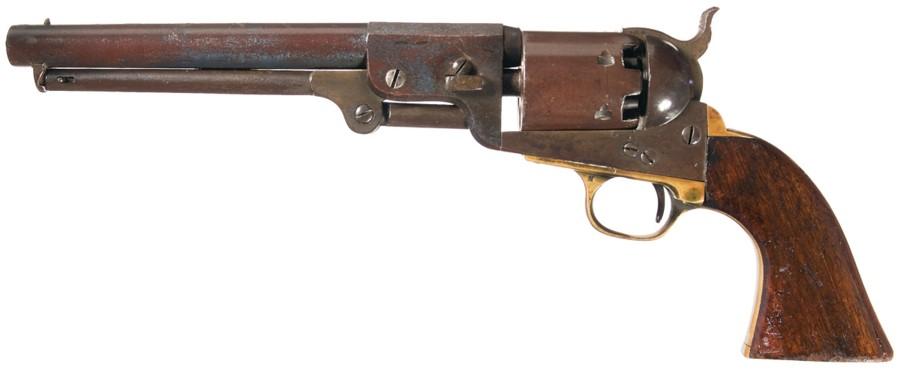
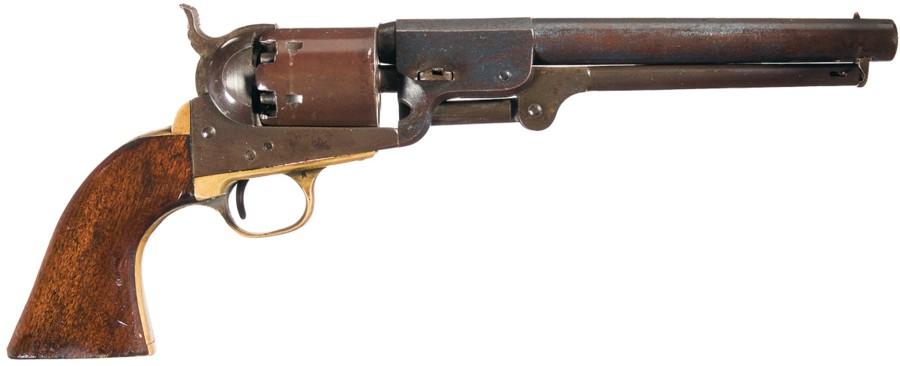
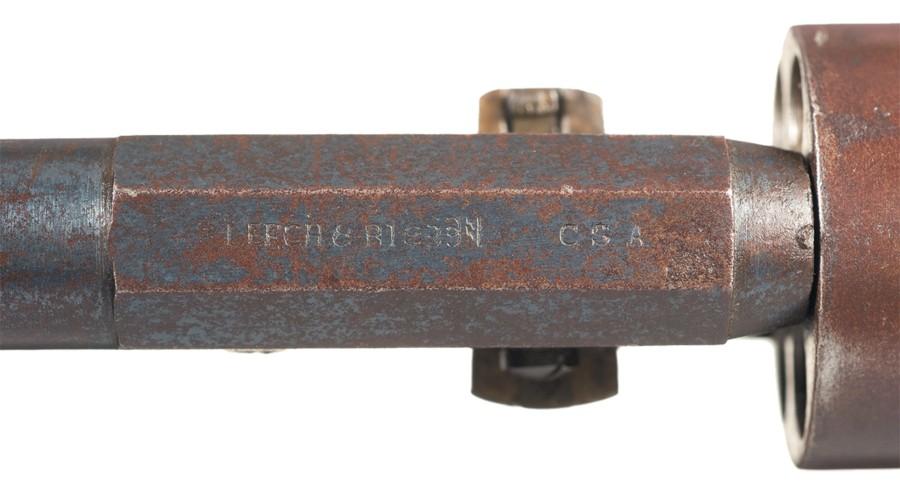
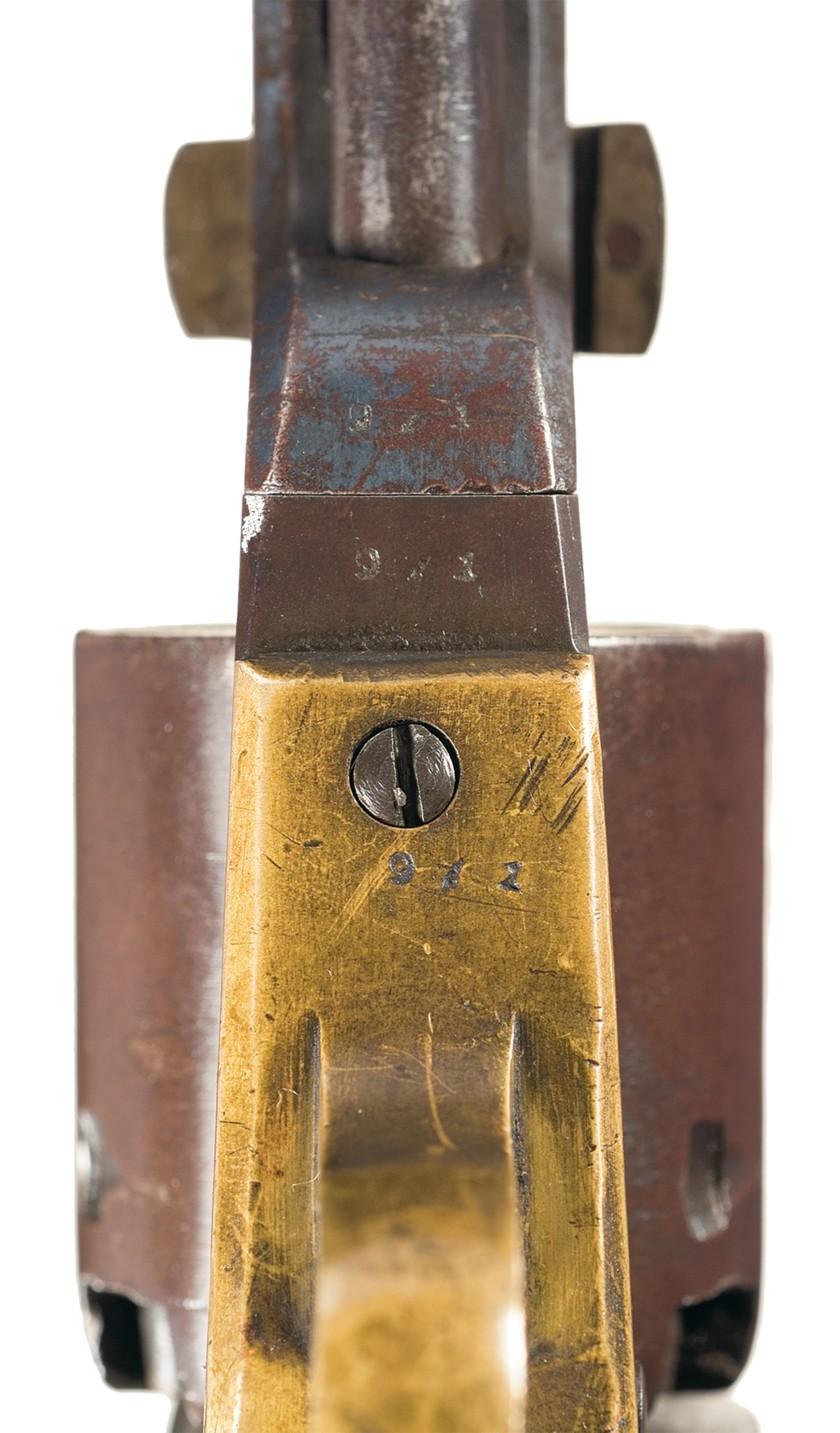
THE RIGDON ANSLEY REVOLVERS
This revolver is basically identical to the precedent one, and it has been established that it was produced with the same machines by the same workers.
There are however some differences with the Leech & Rigdon, the most important one being the 12 slots cylinder, like on the Manhattan Arms of the same era.
When Leech & Rigdon discontinued the safety pins on the cylinders, Colonel Gorgas, chief of Military Ordnance, directed that the guns would be secured by some safety system that would prevent accidental discharge when the gun was in a holster with the hammer resting on an unfired percussion cap.
The 12 slot system, being a cylinder fitted with 6 extra slots on the shoulders between the nipples, that allowed the hammer to lock between two chambers, had been patented by the Manhattan Arms Company of Newark, New jersey, in 1859, on close copies of the same Colt Navy 1851. As the Confederate were not worrying a lot about infringments on existing patents, Rigdon & Ansley simply took over the system.
The other improvements were the cut of a cap release groove in the recoil shield, and the replacement of the ball catch system by a system similar to that on the Colt for the ramrod. Everything else, except for the markings, remained the same as on the Leech & Rigdon revolvers. It seems that the markings have been changed between serial # 1500 and 1650 into AUGUSTA, GA CSA. The CSA signs had been stamped with the same dies used for the Leech & Rigdon markings. The damaged dies seem to have been used up to serial # 1974, then a new set of dies was used, with larger letters of a different style.
The highest serial # observed today is 2359, and this seems to be one of the latest guns produced.
These revolvers were manufactured mostly by hand, so the parts are not really interchangeable. However, the Rigdon revolvers are well made and are among the best made in the Confederacy.With a total production of about 2,400 revolvers, Charles Rigdon was the second largest revolver manufacturer of the Confederacy.
Marcel
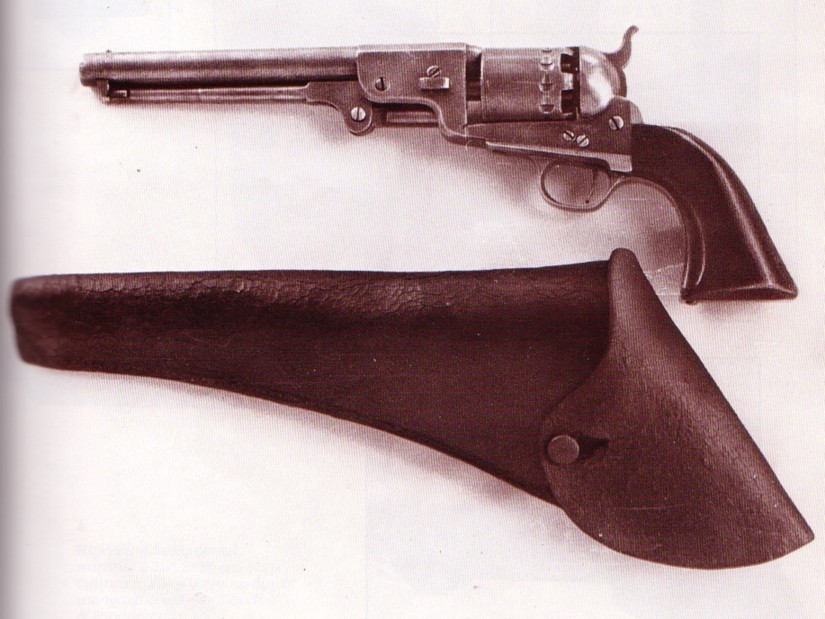
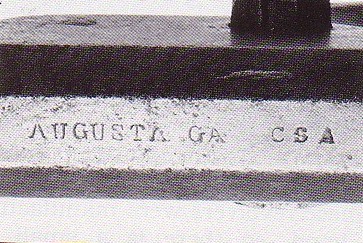
Rigdon, Ansley & Company
Extremely Rare Confederate Rigdon, Ansley & Company Percussion Revolver
Rigdon, Ansley & Co., percussion revolver manufactured in Augusta, Georgia, 1864-65. Approximately 1000 Rigdon, Ansley & Co., revolvers were manufactured by Charles H. Rigdon after the dissolution of the Leech & Rigdon Co. in 1863.
The Rigdon, Ansley Revolvers were an improvement on the Leech & Rigdon Revolvers and are distinguished from the earlier model by the 12-stop cylinder and absence of cylinder safety pins.
This revolver, serial number 2373, was discovered in Texas in 1995 and is the highest known serial number Rigdon, Ansley Revolver. The highest serial number previously identified for a Rigdon, Ansley Revolver is listed in CONFEDERATE HANDGUNS by Albaugh, Benet and Simons as number 2359.
The revolver has a half-octagon barrel fitted with a handmade rear sight in a dovetail on the top flat and a brass pin front sight. The three screw iron frame lacks a capping groove in the recoil shield cut-out. The loading lever has a ball and pin latch. The trigger guard and backstrap are brass and the revolver is fitted with a one-piece walnut grip.
The top of the barrel flat is deeply struck with "C.S.A." ahead of the rear sight.
The serial number, "2373", is located on the barrel, frame, trigger guard and backstrap. The partial serial number, "73", is stamped on the top flat of the loading lever and "23" is visible on the cylinder. All of the serial numbers match and have identical numerals.
